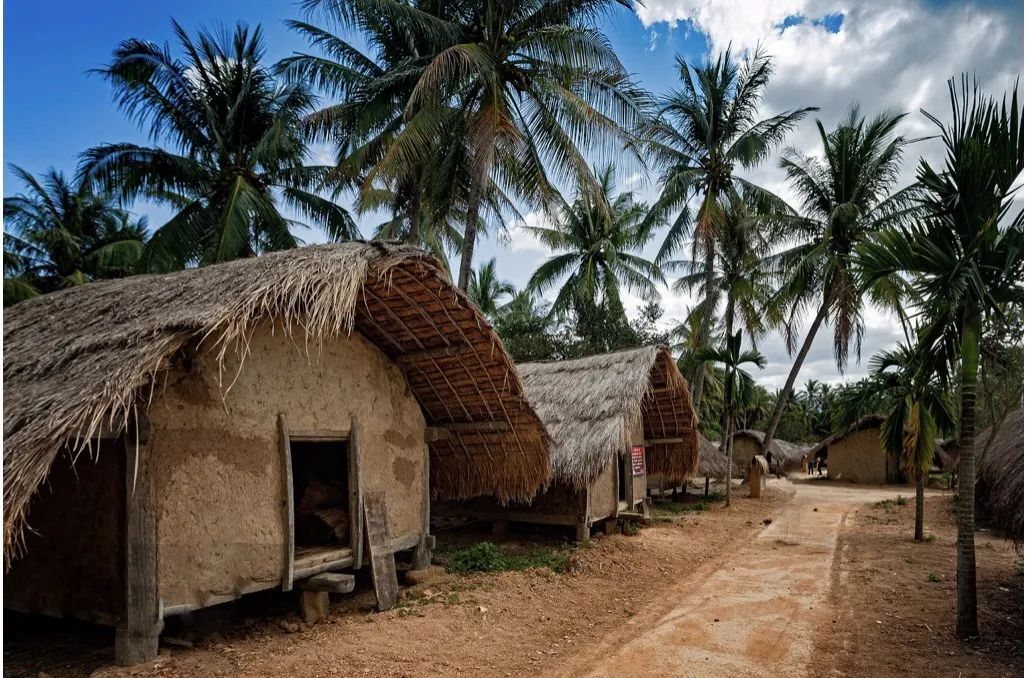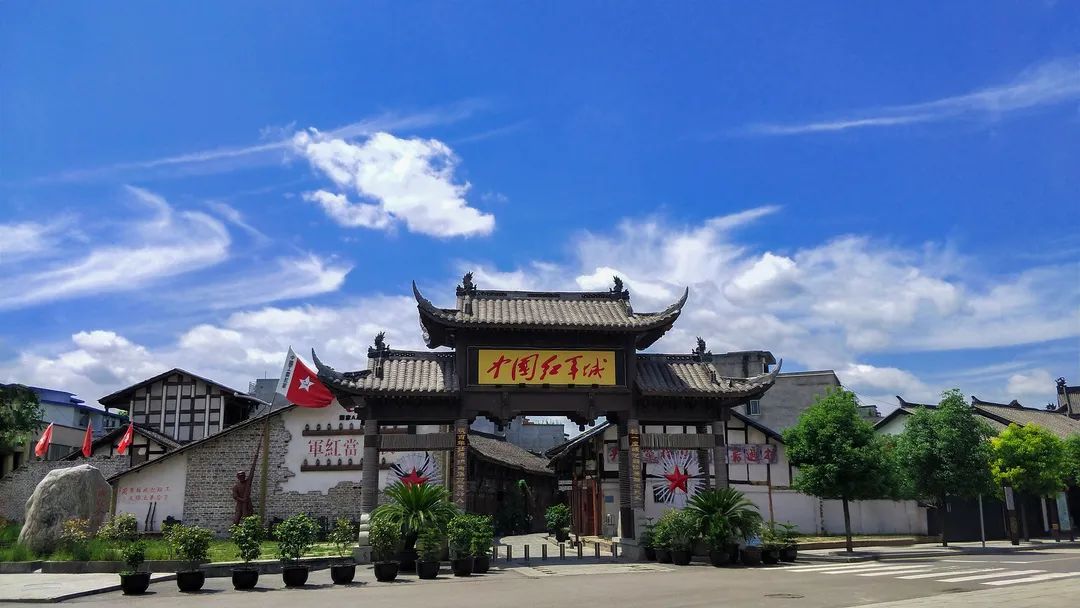Ship -shaped house: Poetic habitat born from the sea 丨 Chinese architectural culture
Author:China National News Time:2022.07.13
The vastness of Nanzheng, boat boats. The South China Sea is an important section of the ancient Maritime Silk Road. During the Qin and Han dynasties, the residents of the southern coastal of my country had sailed above the South China Sea. They lived in the sea and were born of the sea, creating a rich connotative South China Sea Marine Culture.
The ancestors of the Li people lived on Hainan Island very early and were widely distributed on the island. With the continuous development of productive forces and the integration of the culture of other ethnic groups, the Li people's residences have experienced the evolution of the building from the nest, the dry rail to the land, and reflect the cultural characteristics of the Li people's gathering and the harmonious coexistence with nature. "Ship -shaped house", as a house where the Hainan Li people lived for generations. It looks like a canopy ship, and it looks like a cabin inside. It is paved with thatched grass and grass mud walls. This unique form of residential houses constitutes the characteristics of the Li ethnic settlement.
An old living wisdom that is in shape
In Chinese ancient books, before the Western Han Dynasty, some ethnic minorities in the south were called "Luo Yue" and other names, including the ancestors of the Li nationality of Hainan. The ancestors of the Li people entered the mountains and avoid the world. In the Qing Dynasty, Lu Ciyun mentioned in "Xixi Xianzhi" that "Sheng Li lives far away, outsiders cannot reach the realm of Li's mother." The location of the Li nationality settled for security hidden.
As far as the construction of houses is concerned, the location of the Li nationality settlement is often a flat slope or basin in the mountains. The "Yazhou Zhi" in the Qing Dynasty recorded: "The mountains are tens of heavily, and each time is overweight, there is a slightly flatness, the Li people edit the Maojuzhi." Close to the stream, the fields are mostly scattered, like the heavens and the earth in the pot, and the landscape blends. There are thorns around the village, which looks like Yingzhai, so it is called "Lizhai".
The slope is the base, carrying mountains, front -explosive river, and terraces. Close to cultivated land and facilitate labor production; close to water sources, convenient for drinking and irrigation farmland; near mountains and forests, which is conducive to typhoon attacks, and also facilitate logging hunting. It can be described as the momentum, and coexist with the surrounding environment. This way of living is not only a mapping of the original living conditions, but also the spiritual relic of ancient civilization.
The introduction of the ship -shaped house in the documentary "Aerial China".
The formation and evolution of the dry -column -type boat -type house
The dry -column building is a form of living in the common ethnic group in the south. The Northern Qi "Wei Book" records, "According to the tree building blocks, it is called 'dry lame'." The dry column -type building is usually divided into two floors, using wood, bamboo materials as pile pillars, flooring and upper floor walls, lower floors, and lower floors. No cover. The upper layer is used as a circle of livestock or placing agricultural tools. The roof is human -shaped, covering bark, thatch or pottery tile.
According to legend, during the Yin Zhou period, the ancestors of the Li nationality drifted across the sea by wooden boats, overcoming various dangers, arrived in Hainan Island and decided to settle here. But for a long time, the shipboard was damaged, and they cut the thatched grass on the roof and used bamboo and wood as the frame to build the initial ship -shaped house. It can be seen that "ship" is an important element of the Li culture and has the characteristics of early marine cultural characteristics, and the ship -shaped house can also be understood as the product of the traditional Chinese creation of "bionic elephant".

Ship -shaped house in Baicha Village, Jiangbian Township, Dongfang City, Hainan Province. Jinxin confessed
The original dry -column -type boat bottom was higher than the ground, about 2 meters, also known as tall ship -type houses. The lower part of the house is used for breeding livestock. The upper part is prepared by a bamboo strip to prepare the arched structure, covering thatch to form a tube -shaped roof. Subsequently, under the influence of the Han culture, the livestock space at the bottom of the boat -shaped rock gradually disappeared, and the high feet that was about 0.5 meters from the ground was about 0.5 meters, also known as a low -footed boat. At the end of the Qing Dynasty and the beginning of the Republic of China, the Li nationality went to bed in the Han nationality, and gradually removed the feet of the dry -column ship -shaped house, directly landing the house, and eventually turned into a land -type ship -shaped house.
In the process of evolution, the eaves wall walls in the land -type ship are separated and the top of the golden top is formed. The entrance of the traditional ship -shaped house is located on the gable surface, and the roof is covered directly to the ground. At the beginning of the 20th century, in order to expand the internal space, the roof of the ship -shaped house changed from a tube -shaped structure of bamboo to the wooden structure of the wooden structure imitating the local Han residence. The book "Hainan Island National Chronicle" published by German scholar Shito in 1937 records that the high -pink boat -shaped house in Baisha County, Baisha County, is about 1.5 meters from the floor. Getting. Due to the rise of the roof of the top of the gold, the roof is began to use bamboo mud or coconut leaves as a wall. According to the different materials, it can be divided into three types: huts, brick and tile houses, and stone tile houses. The ship -shaped house is the type of residential houses and local characteristics formed by the ancestors of the Li nationality under the natural environment and climatic conditions of Hainan Island, and adapt to local conditions, and absorb the Han nationality and culture. It can be said that the ship -shaped house reflects the life trajectory of the Li people and is the crystallization of wisdom.
Author unit: Southeast University's Chinese National Visual Image Research Base. This article is the research results of the National Social Science Foundation "Casting the Chinese Nation Community Awareness" research special "Analysis of the Visual Image Category Analysis of the Chinese Nation Community" (project number 20VMZ008).
Source: China National News
- END -
Wangcang Red Army City

Wangcang Red Army City is located in Donghe Town, Wangcang County, Guangyuan City ...
Don't say that it is impossible before the last jump, the Chinese player Wang Jia Men's World Championship men's long jump to win gold to create history

July 17, Beijing time2022 World Track and Field Championship men's long jump final...